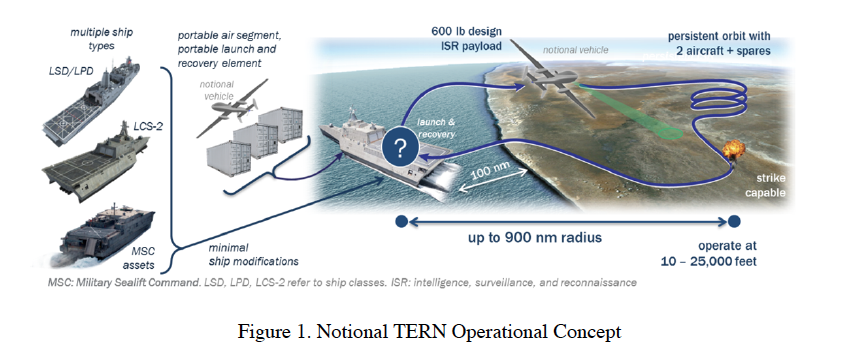An Arctic tern.
The Pentagon want to kill two birds with one stone.
First, drones are all the rage in military circles. They can fly longer, don’t risk a pilot, and – sometimes – are even cheaper than manned aircraft.
Secondly, aircraft carriers are increasingly viewed as floating bulls-eyes.
Solution: turn the Navy’s many smaller ships into mini-aircraft carriers with their own fleet of drones on board.
That, in a nutshell, is the goal of the Defense Advanced Research Projects Agency’s Tactically Exploited Reconnaissance Node – TERN – program (give DARPA credit, at the very least, for the acronym: a tern is a seabird found around the globe).
The program, if – and that’s always a big if at DARPA – successful could yield “dramatic new military capabilities,” DARPA says in a recent announcement of the effort.
Caution! Pentagon buzzword overdose imminent!
“A TERN system would allow deep overland ISR and strike missions without an a priori requirement for forward basing or host nation ground footprint,” it says. “Long radius of action enables access to remote geographic areas while long endurance enables persistent ISR and strike systems to operate across the kill chain in environments with fleeting targets.”
The Pentagon’s gee-whizzes go on to say:
TERN is an advanced technology program to design, develop, and demonstrate a medium altitude long-endurance (MALE) [OK….so some acronyms are better than others] unmanned aircraft (UAV) and related technologies to enable future launch, recovery, and operations from small ships…The ultimate goal for a TERN objective system air vehicle is to match the performance of emerging land-based MALE systems to enable persistent Intelligence, Surveillance, and Reconnaissance (ISR) and strike capabilities with payloads of 600 pounds while operating up to 900 nautical miles from a host vessel.
DARPA is planning on awarding initial $8.9 million contracts to companies interested in the TERN-key operation, with a follow-on $42 million deal for a single winner leading to test flights in 2016.
DARPA notes that drones are fundamentally simply:
DARPA envisions rapid prototyping best practices, including significant hardware and software content re-use in the demonstrator in order to maximize leveraging of existing, proven systems. For example, a TERN demonstrator may re-purpose existing propulsion systems, vehicle management systems, actuators, or airframe components, as appropriate.
But launching and recovering them at sea, not so much:
DARPA seeks innovative proposals for end-to-end system solutions for TERN. Technologies of interest include: novel launch and recovery techniques and equipment, precise relative aircraft-ship navigation and state estimation, ship motion prediction, novel or high bandwidth control effectors and algorithms, minimum gauge maritime-capable structures, active load control, natural laminar flow design, high lift devices, high stroke recovery or arrestment devices, and compact stowage arrangements. Additional essential technologies that may be explored to the extent that funding allows include automated maintenance systems, robotic deck handling, automated vehicle preflight checkout, and low specific fuel consumption propulsion.
DARPA envisions TERN as an add-on capability that won’t require major modifications to the ships that use it. Ideally, it would be a “mission truck” capable of carrying different payloads depending on the specific mission.
“A smaller ship deploying with two or more air vehicles could offer high-tempo ISR/strike operations on an as-needed basis,” DARPA says.
It’s a safe bet the carrier folks will dispute the notion that two aircraft of any kind, never mind relatively puny drones, can generate high-tempo operations.



